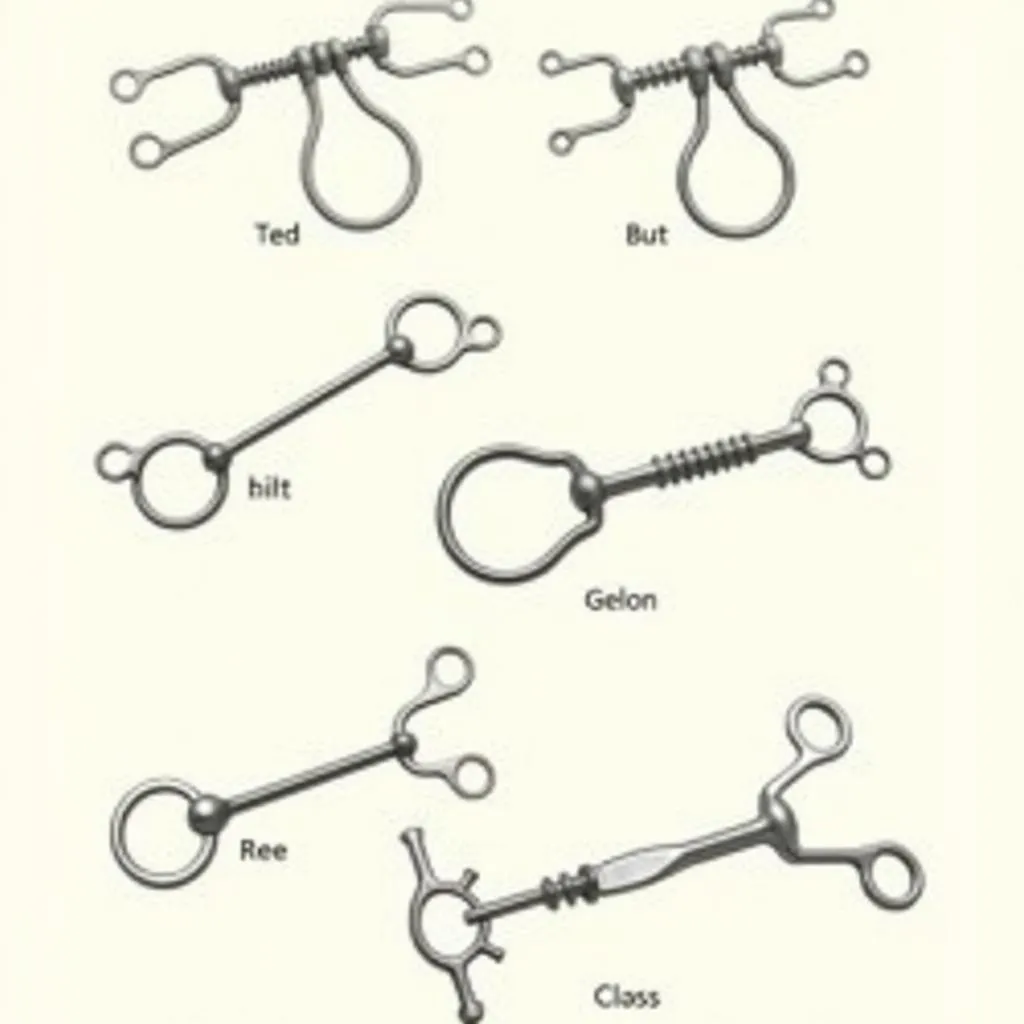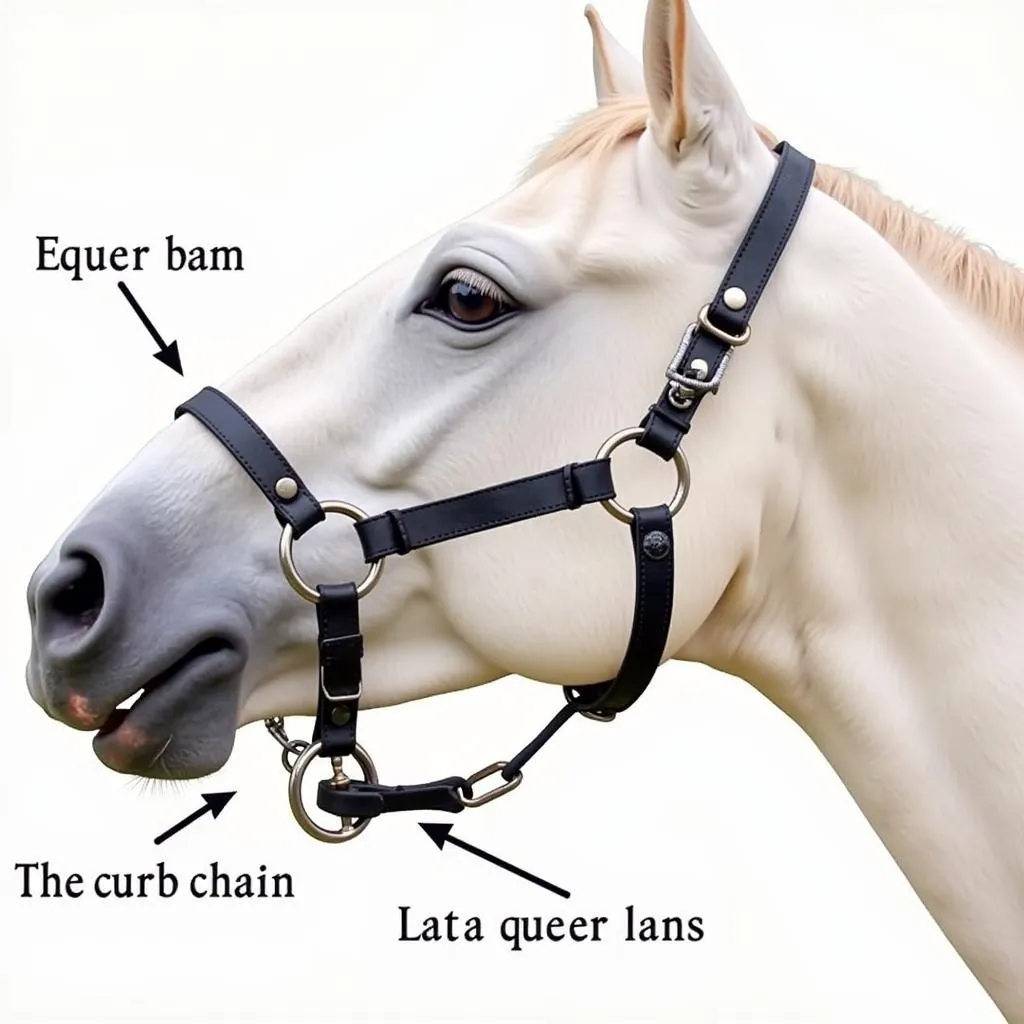A leather bit is a crucial part of a horse’s tack, playing a vital role in communication and control during riding. It’s essential to understand the different types of leather bits, their functions, and how to choose the right one for your horse’s needs. This guide provides comprehensive information on leather bits, helping you make informed decisions about your horse’s comfort and performance.
The History of Leather Bits
Leather bits have been used for centuries, evolving alongside equestrian practices. The earliest forms were likely simple, made from materials found in nature, like wood, bone, or leather. Over time, craftsmanship improved, and metal elements were introduced, leading to the diverse range of bits we see today.
What is a Leather Bit?
A leather bit is a mouthpiece that sits in a horse’s mouth, attached to reins that allow the rider to signal and control the horse. The bit’s design and materials influence how the horse responds to the rider’s aids. Leather bits offer a natural feel and gentle pressure, making them a popular choice for various disciplines.
Types of Leather Bits: A Detailed Breakdown
1. Snaffle Bits
Snaffle bits are the most common type of bit, characterized by their simple design and direct action on the horse’s mouth. They apply pressure on the lips and bars of the mouth, allowing for basic control and communication.
 Types of Snaffle Bits for Horses
Types of Snaffle Bits for Horses
2. Pelham Bits
Pelham bits offer more control and leverage than snaffle bits, with a combination of direct and leverage action. They have two reins, one for direct control and the other for leverage.
 Pelham Bit Design and Function
Pelham Bit Design and Function
3. Curb Bits
Curb bits utilize leverage to amplify the rider’s signals, using a curb chain that applies pressure to the horse’s chin and lower jaw. They are often used in disciplines requiring precision and responsiveness.
 Curb Bit with Curb Chain
Curb Bit with Curb Chain
Choosing the Right Leather Bit for Your Horse
Selecting the right leather bit is crucial for your horse’s comfort and performance. Consider these factors:
- Horse’s Age & Training Level: Young and untrained horses may benefit from gentler bits, while experienced horses might handle more advanced bits.
- Horse’s Mouth Sensitivity: Some horses have more sensitive mouths than others. Choosing the right bit material and design is essential to avoid discomfort.
- Riding Discipline: Different disciplines require different levels of control and communication, influencing the type of bit chosen.
- Rider’s Experience: Beginner riders may find simpler bits easier to use, while experienced riders may utilize more advanced bits.
Leather Bit Care & Maintenance
Properly caring for your leather bit ensures its longevity and performance. Here’s a guide:
- Regular Cleaning: Clean your leather bit after each use with a leather cleaner and conditioner.
- Storing Properly: Store your bit in a dry, cool place to prevent damage.
- Inspecting Regularly: Inspect your bit for any wear or tear and replace it if needed.
Expert Insights on Leather Bits
“Choosing the right leather bit is like finding the perfect shoe. It needs to fit properly and be comfortable for the horse, allowing for clear communication and control,” says John Thompson, an experienced equestrian trainer.
Sarah Miller, a renowned equine veterinarian, emphasizes the importance of bit selection: “A poorly chosen bit can lead to discomfort and resistance in the horse, potentially affecting their performance and overall well-being.”
Frequently Asked Questions (FAQ)
- Q: What is the best leather bit for a beginner rider?
- A: A simple snaffle bit with a smooth mouthpiece is typically recommended for beginners.
- Q: How do I know if the bit is too harsh for my horse?
- A: Signs of discomfort include head tossing, tongue lolling, or resistance to the bit.
- Q: What are some alternative bitless bridle options?
- A: Some alternatives include hackamores and sidepulls, which use leverage and pressure points instead of a bit.
Conclusion
Understanding leather bits is essential for every horse owner and rider. By considering the different types, their functionalities, and your horse’s individual needs, you can choose the best bit for comfortable communication and optimal performance. Remember, the goal is to create a harmonious relationship with your horse, ensuring both of you enjoy the journey together.
- For assistance, contact us at: 0772127271, [email protected]. Or visit our office: QGM2+WX2, Vị Trung, Vị Thuỷ, Hậu Giang, Việt Nam. Our customer service team is available 24/7.